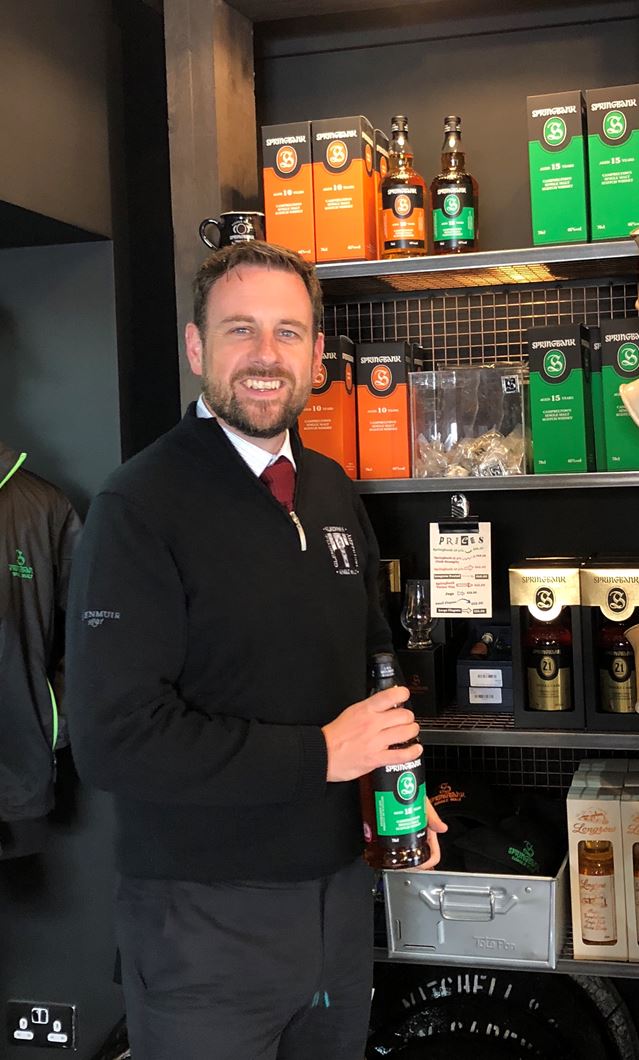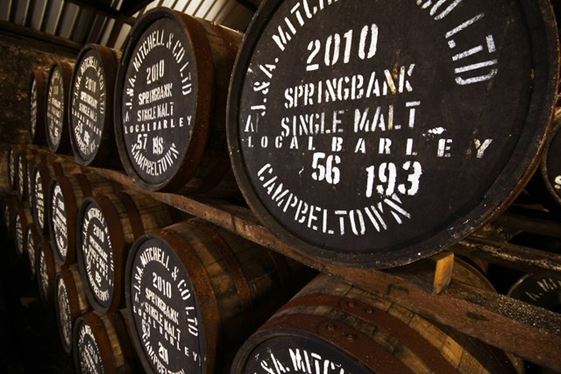
Springbank focuses on using old-style production methods and produces one of the most handmade whiskies in Scotland. It is also the most self-contained distillery in Scotland, with every step of the process – from malting to labelling the bottles – taking place on-site in Campbeltown.
In this second part of our interview with Ranald, he looks at some of the more technical aspects of production and the things that make Springbank different for the rest of Scotland's distilleries.
Why the complex system of double/triple/two-and-two-thirds distillations for Longrow, Hazelburn and Springbank? Why not just settle for one or the other?
Each distillation method is designed to suit the style of whisky we’re making: double distilling makes Longrow a heavier spirit, which suits its peaty flavour profile, whereas triple distillation helps make Hazelburn lighter and sweeter. Each distillate also has different cut points for the same reason: we want the heavier, more phenolic flavour compounds for Longrow and the lighter, more estery compounds for Hazelburn, so the points at which we collect the spirit in the distillation run are adjusted accordingly. For reference, the cut points are as follows:
• Springbank – around 76% down to 60%
• Longrow – around 74% down to 58%
• Hazelburn – around 78% down to 62%
I think some of the Hazelburn releases have a hint of peat. Are ex-Springbank or -Longrow casks used to mature Hazelburn?
There may well have been the occasional Springbank or Longrow refill-bourbon cask filled with Hazelburn spirit over the years; it’s not something we would do deliberately but it’s certainly likely to have happened on occasion. That’s really the only likely explanation as absolutely nothing else during the production process contributes any kind of peaty flavour.
How do you clean the distillery between distillation of Springbank and Hazelburn?
We do a thorough clean of the distillery every week regardless of what we’re distilling but in a place like Springbank, which those who have been can verify isn’t exactly a modern, efficient plant, it’s almost impossible to remove all trace elements of phenols from the entire process, from kilning through to maturation.
After first bottling a peated whisky, how do you clean/flush the lines for the next unpeated bottling?
We’re well used to cleaning the bottling lines and have the same procedures in place when we need to bottle Hazelburn or Springbank after Longrow – and especially the Heavily Peated Kilkerran at 84ppm! The whole system is flushed through with water after each bottling run to avoid cross-contamination, and the coarse filter pads which we use to remove cask char are changed after every run as well.
Sometimes Springbank can be very salty (which is rare in whisky, but I totally love it). Where does that come from?
It can only be through maturation as far as I’m concerned, as there is nothing inherent in the distillation process which would promote that kind of character, and, indeed, our new make spirit isn’t salty either. Being so close to the sea, the air here is pretty salty when there’s a wind whipping the froth off the waves in Campbeltown Loch and, to me, it isn’t unrealistic to think that finds its way into the whisky.
How different were the casks used to mature Springbank in the 1960s and 1970s vs today and how much you think it defines the style?
I think it’s fair to say that there is a difference in the casks we’re being supplied with, but it’s important to also realise that most of the ingredients used to make whisky will also have changed since those days: the barley is different, the peat is from a different source, the yeast will be different etc. Any change in the character of a whisky can be attributed to a number of factors.
Just like other distilleries, we can’t particularly control the ingredients that we need to buy from external sources. We can only really work with what is available on the market and it’s inevitable that those things change over time. For example, did you know that a strain of barley grown commercially for malting has a lifespan of just 10 years before it becomes obsolete and a new strain is introduced to replace it? It’s also interesting – to me at least – that the development of new strains of barley takes around 12 years, so before a single seed has been planted, two years of work has already been carried out on developing its replacement.
All we can control is the way that we work with the ingredients available to us and we think we’ve managed to get that down to a pretty fine art, helped by not having to worry about efficiency, cost-effectiveness and all those kinds of things. We know how to make our whiskies, and our commitment is to never change the way we do it. On the subject of some of those Springbank whiskies from the 60s and 70s, I think another important point worth making is that while it’s undoubtedly true that there are some legendary bottlings from that era, there is also a strong likelihood that there was some less stellar whisky coming out too.
I think on the whole the quality of what we’re distilling today is consistently higher than 40 or 50 years ago, and that’s reflected in both our core range and the limited releases we produce too. Now that we’ve finally got some whisky in the warehouses approaching 30 years old, with plans to bottle some within the next couple of years and hold some back for a 35-year-old Springbank, it will be very interesting to compare the “modern” 30-plus year old whisky with the old stuff and see just how much difference there is.
Come back Sunday for the third and final part of our interview with Ranald as we take a look at the ancient whisky capital of the world- Campbeltown!

